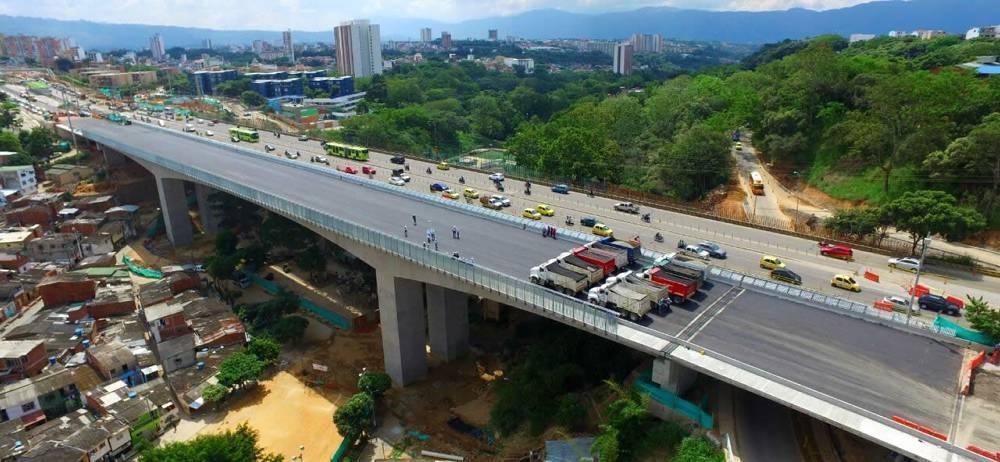Optimal Sensor Placement of a Box Girder Bridge Using Mode Shapes Obtained from Numerical Analysis and Field Testing
Óptima Localización de Sensores en un Puente de Viga Cajón Utilizando Modos de Vibración Obtenidos de Análisis Numérico y Pruebas de Medición en Campo


Esta obra está bajo una licencia internacional Creative Commons Atribución-NoComercial-SinDerivadas 4.0.
Declaración del copyright
Los autores ceden en exclusiva a la Universidad EIA, con facultad de cesión a terceros, todos los derechos de explotación que deriven de los trabajos que sean aceptados para su publicación en la Revista EIA, así como en cualquier producto derivados de la misma y, en particular, los de reproducción, distribución, comunicación pública (incluida la puesta a disposición interactiva) y transformación (incluidas la adaptación, la modificación y, en su caso, la traducción), para todas las modalidades de explotación (a título enunciativo y no limitativo: en formato papel, electrónico, on-line, soporte informático o audiovisual, así como en cualquier otro formato, incluso con finalidad promocional o publicitaria y/o para la realización de productos derivados), para un ámbito territorial mundial y para toda la duración legal de los derechos prevista en el vigente texto difundido de la Ley de Propiedad Intelectual. Esta cesión la realizarán los autores sin derecho a ningún tipo de remuneración o indemnización.
La autorización conferida a la Revista EIA estará vigente a partir de la fecha en que se incluye en el volumen y número respectivo en el Sistema Open Journal Systems de la Revista EIA, así como en las diferentes bases e índices de datos en que se encuentra indexada la publicación.
Todos los contenidos de la Revista EIA, están publicados bajo la Licencia Creative Commons Atribución-NoComercial-NoDerivativa 4.0 Internacional
Mostrar biografía de los autores
This paper presents a comparative study of an Optimal Sensor Placement (OSP) implementation conducted in a box girder bridge using experimental and numerical mode shapes obtained at different construction stages. It is widely recognized that monitoring the dynamic response of bridges during different construction stages provides valuable information to adjust design considerations. Therefore, there is a need for the development of OSP implementations in order to find the optimal number of sensors needed for real applications. In the present study, an OPS method based on the maximization of the Fisher Information Matrix (FIM) is used. The use of experimentally derived and numerical based mode shapes is considered in the determination of the optimal sensor locations. Field testing results previously conducted before connecting the central segment of the main span are also included in this study. The asphalt pavement weight effect in OSP determination is also analyzed by considering field testing.
Visitas del artículo 508 | Visitas PDF 287
Descargas
- Bagheri, A., Alipour, M., Ozbulut, O., Harris, D. (2018). A nondestructive method for load rating of bridges without structural properties and plans. Engineering Structures, 171, pp. 545-556.
- Chang, M., Pakzad, S. (2014). Optimal sensor placement for modal identification of bridge systems considering number of sensing nodes. Journal of Bridge Engineering ASCE, 9(6):04014019.
- Chen, G-W., Omenzetter, P., Beskhyroun, S. (2017). Operational modal analysis of an eleven-span concrete bridge subjected to weak ambient excitations. Engineering Structures, 151, pp. 839-860.
- Costa, C., Ribeiro D., Jorge, P., Silva, R., Arêde, A., Calçada, R. (2016). Calibration of the numerical model of a stone masonry railway bridge based on experimentally identified modal parameters. Engineering Structures, 123, pp. 354-371.
- Hernandez, W., Viviescas, A., Riveros, C.A. Dynamic response assessment during the construction of a segmental bridge using finite element modeling and ambient vibration testing. Dyna, in Review.
- Kammer, D., Brillhart, R. (1996). Optimal sensor placement for modal identification using system-realization methods. Journal of Guidance, Control and Dynamics, 19, pp. 729-731.
- Kim, T., Youn, B., Oh, H. (2018). Development of a stochastic effective independence (SEFI) method for optimal sensor placement under uncertainty. Mechanical Systems and Signal Processing, 111, pp. 615-627.
- Kinemetrics Inc. (2016). [On line]. [Last access: 19 April 2016].
- Liu, K., Yang, R., Soares, C. (2018). Optimal sensor placement and assessment for modal identification. Ocean Engineering, 165, pp. 209-220.
- Meo, M., Zumpano, G. (2005). On the optimal sensor placement techniques for a bridge structure. Engineering Structures, 27, pp. 1488-1497.
- MIDAS Information Technology Co. Ltd. (2016). Midas User Manual, MIDAS Information Technology, Seongnam, South Korea.
- Prabhu, S., Atamturktur, S. (2013) Selection of Optimal Sensor Locations Based on Modified Effective Independence Method: Case Study on a Gothic Revival Cathedral. Journal of Architectural Engineering ASCE, 19(4), pp. 288-301.
- Riveros, C., García, E., Rivero, J. (2013). A comparative study of sensor placement techniques for structural damage detection. Revista EIA, 10, pp. 23-37.
- LANL/UCSD Engineering Institute. (2010). Structural Health Monitoring Tools (SHM Tools). Los Alamos national laboratory, US.
- Vicenzi, L., Simonini, L. (2017). Influence of model errors in optimal sensor placement. Journal of Sound and Vibration, 389, pp. 119-133.




